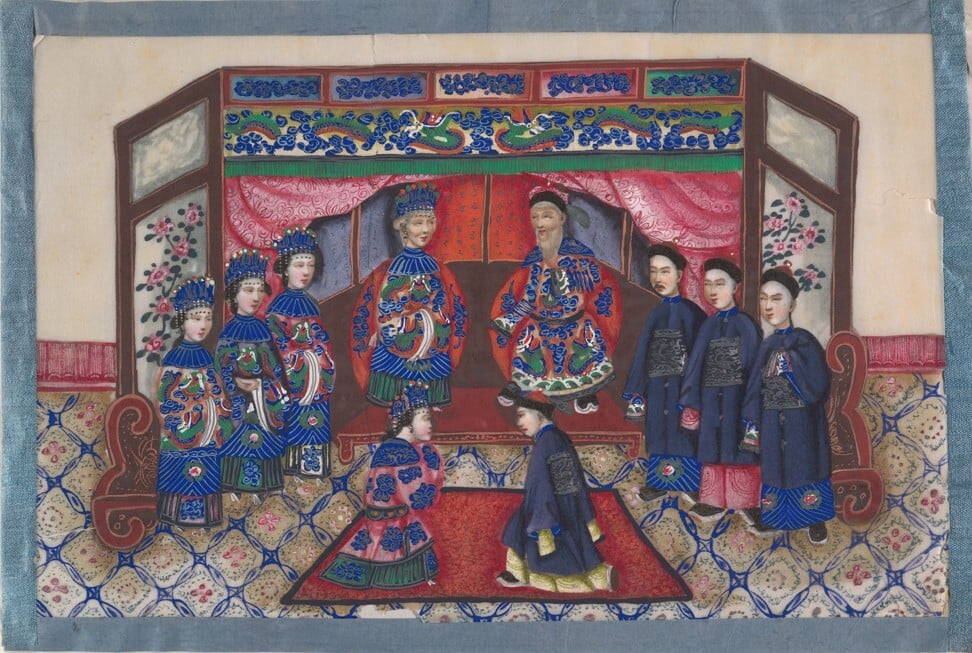
Chinese matchmaking and arranged marriages in imperial China – for love and money
- Marriages among the wealthy were less about a union between two young people than an alliance between families
- Today, matchmakers help to coordinate rituals at traditional wedding ceremonies – in return for a fat fee
The Netflix documentary series Indian Matchmaking has cast a spotlight on the marriage industry on the subcontinent, where parents still employ professional matchmakers to find spouses for their children.
Matchmaking isn’t a relic of the past; millions of men and women worldwide seek the help of go-betweens to find their life partners, from multinational matchmaking agencies such as Lunch Actually and Hong Kong’s very own Mei Ling (who found fame on the 2012 TVB reality show Bride Wannabes), to dating apps such as Tinder and OkCupid.
My parents had a “love marriage”, but not before my mother’s family tried to arrange unions for her, with an in-law’s relative twice her age, and with a son of her father’s business associate. Both ventures were unsuccessful, due in part to my mother’s refusal to go along with “old-fashioned” arranged marriages, and my father’s determined courting.
He even staged a one-man sit-in at my Cantonese grandfather’s shop, in Singapore’s Bugis district, to protest the latter’s disapproval of his daughter’s relationship with a Peranakan-Hokkien man. My parents will celebrate their 55th wedding anniversary next January.

Permission from parents or elders, and the work done by go-betweens, were essential components of legitimate marriages for much of pre-20th century China. A contemporary elucidation of this practise, and its justification for centuries afterwards, is found in the writings of Chinese philosopher Mengzi, or Mencius (372BC-289BC): “If the young people, without waiting for the orders of their parents, and the arrangements of the go-betweens, shall bore holes to steal a sight of each other, or get over the wall to be with each other, then their parents and all other people will despise them.”
In a typical arranged marriage in China, a family with a son or daughter of suitable age would engage a matchmaker, who would cast his or her net for potential candidates and conduct the necessary background checks on their reputation and character, as well as the social status and financial position of their families.
‘Love marriages’ were much more prevalent among the lower classes as there were more opportunities for men and women to mix socially
The extent and thoroughness of these investigations depended on the families involved: the wealthier and more notable the families were, the more criteria there were for consideration.
Marriage was less about the joining of two individuals than about the alliance of two families. Having said that, young people were not totally without agency. Even in titled and wealthy households, whose daughters were cloistered and had minimal contact with the world beyond their families, young women could indicate their unwillingness to enter the match if they found fault in their would-be husbands – too old, too unattractive, no prospects. If they were lucky, their parents would acquiesce with their wishes.
“Love marriages” were much more prevalent among the lower classes as there were more opportunities for men and women to mix socially. Common folk did not have the luxury of secluding their women in purdah. Even so, young couples in love who wished to marry had to seek approval from their parents or elders and engage a matchmaker to act as a guide for both sides in the formalities of marriage negotiations, exchanging of gifts, and so on.
Professional matchmakers in contemporary Chinese societies, apart from bringing couples together in matrimony, serve as custodians of Chinese wedding traditions. They are the ones who tell everyone at the wedding what to do, where to stand, how to kneel and which teacup to use. The good ones are a walking encyclopaedia of ceremonial rituals; others make things up as they go along. For their services and the many auspicious declamations they deliver on the big day, they get a fat fee in a lai see packet.

